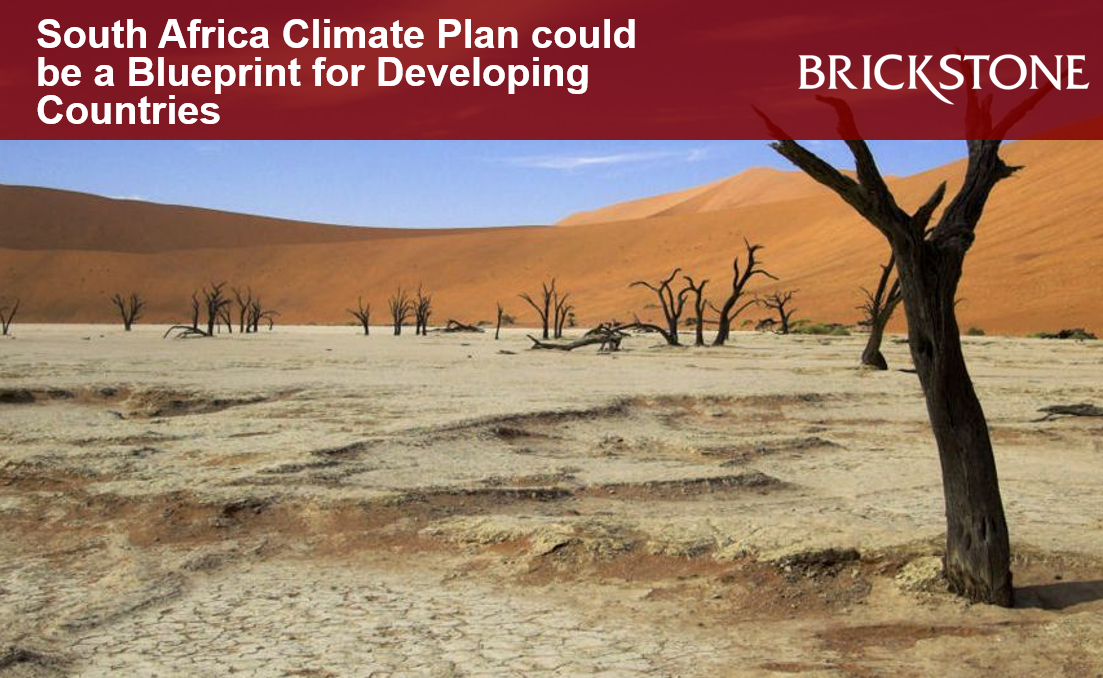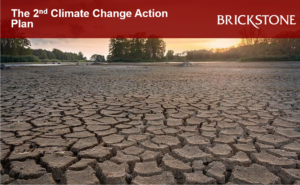South Africa Climate Plan Could Be a Blueprint For Developing Countries
Among the more significant topics at this year’s UN climate meeting is how to wean the developing world off of fossil fuels. The meeting, known as COP27, held in the framework of the United Nations Framework Convention on Climate Change (UNFCCC), took place in Egypt.
Ahead of the meeting, South Africa released details of an $8.5 billion plan to transition to clean energy, paid for by the US and other wealthy countries. In announcing those details, South African president Cyril Ramaphosa called the plan a down payment on what the country will ultimately need to get itself off of coal, which powers 90 percent of its electric grid.
This climate plan, according to The Alllegheny Front, would not only attract investment, create new industries and jobs, and help the Continent to achieve energy security and climate resilience, but will also be a blueprint for developing countries as such.
This article by Brickstone reviews some institutional reports and publications on South Africa’s Coal-dependent Climate plan, highlighting key facts and insights on how it could be a blueprint for developing countries.
In Coal-dependent South Africa’s Climate plan
The United States joined Britain, France, Germany and the European Union on Tuesday, November 2, 2022, in a multi-billion dollar partnership to help South Africa finance a quicker transition from coal that will provide a model for other countries. For the past year, the countries have been trying to hash out the details of the plan.
According to AllAfrica, South Africa’s journey towards decarbonisation via the Just Energy Transition Partnership (JETP) has been described as one of the major achievements of the 2021 United Nations Climate Change Conference, more commonly referred to as COP26.
The government announced a major U.S.$8.5 billion deal with the UK, the U.S., Germany, France and the European Union. The climate-finance agreement aims to invest in renewable energy and move away from coal for South Africa over the next three to five years.
South Africa is the world’s 13th-biggest source of greenhouse gases, with 45% of its annual 452 million tons of emissions coming from electricity generation. The package is key to closing many of the nation’s old and malfunctioning coal-fired plants and replacing them with renewable sources.
According to Bloomberg, the investment plan as published envisages 90% of the funds being used to decommission coal-fired power plants in tandem with developing renewable-energy generation, strengthening the transmission grid and modernizing the electricity-distribution system. The rest will go toward the development of green-hydrogen and electric-vehicle industries. Specifically, $7.6 billion being invested in electricity infrastructure, $700 million in developing green-hydrogen projects and $200 million in an electric-vehicle industry over the next five years. Those allocations are well below the $84 billion the government says is required — with $47.2 billion needed for the electricity sector, $21.2 billion for green hydrogen and $8.5 billion for electric vehicles.
Ultimately, South Africa’s announcement comes at a time when 77% of the nation’s greenhouse (GH) gas emissions are from energy production, according to the Presidential Climate Commission. Additionally, South Africa is listed as the 13th-largest emitter of GH gasses, according to the Global Carbon Atlas and relies on coal to produce 70% of its electricity generation.
The JETP has become an example for other countries to follow with Senegal, Indonesia, Vietnam and India announcing JETP plans of their own. However, questions remain on how smaller nations such as islands in the Caribbean, Indian Ocean and Pacific – specifically developing economies – may secure similar collaborations.
Read more here.






